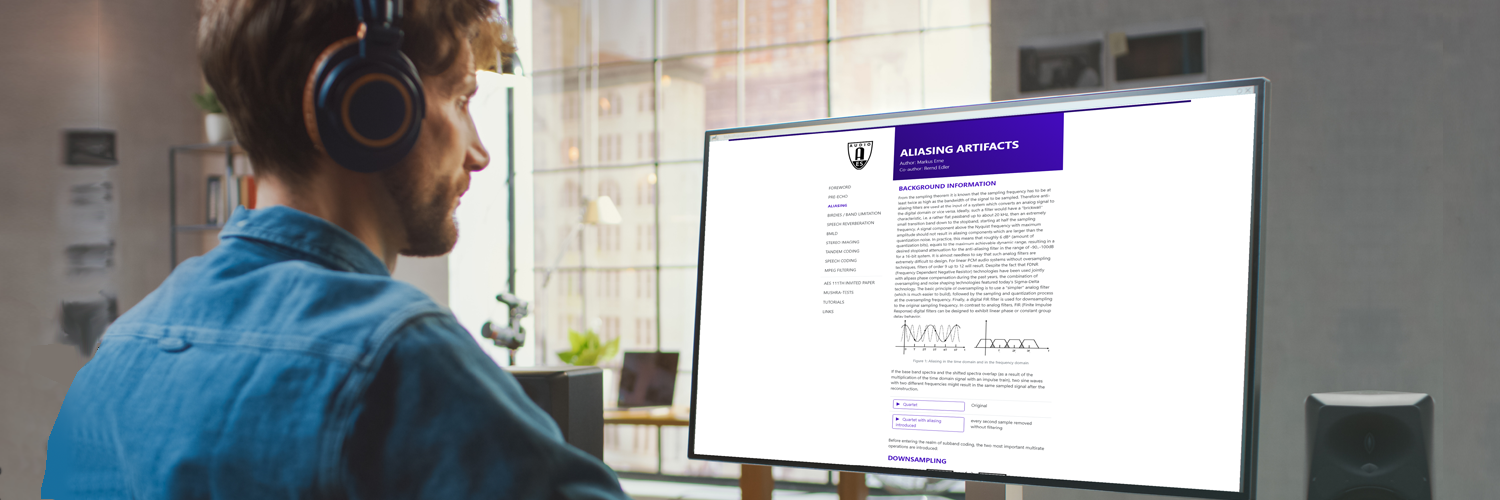Classical training material has been reworked into a contemporary tutorial to help everyone involved in audio coding identify coding artifacts.
Audio artifacts are a phenomenon as old as audio engineering. They range from noise and harmonic distortion in the analog days to aliasing, unmasking and so-called birdies in the digital age – to name just a few. Most of these effects arise from the various methods of audio compression ubiquitous in present-day communication and entertainment technologies. As the number of available codecs grows, as does the complexity of the workflows. It becomes increasingly difficult – especially to the untrained ear – to identify where unwanted audible coloration that could disrupt the listening experience is coming from.
As pioneers in audio technology and audio compression in particular, Fraunhofer IIS engineers have a long tradition of combating those effects systematically and successfully. Their findings were incorporated into an educational project, which was a joint effort alongside the AES Technical Committee on Coding of Audio Signals. It was originally distributed as a CD-ROM around 20 years ago. While updating the content with artifacts found in the latest coding techniques, the contributors decided to migrate the entire project to a HTML-based representation to provide a contemporary user experience and web compatibility. The new version is an easily accessible tutorial that will help learners detect and identify problems they might be facing in their current projects. Because very often identifying the acoustic symptom is the first step toward eradicating it. Not only engineers can benefit from the training, but all kinds of critical listeners, such as content creators (artists, producers, distributors, etc.), whom it can help to ensure the highest audio quality throughout the production chain, or even consumers, who can make informed decisions about their preferred listening codecs and bitrates.
“This training tool covers practically the entire range of phenomena that may occur in audio coding projects, as well as their background: from pre-echo and speech reverberation to stereo imaging and speech coding – and everything in between,” says Jürgen Herre, Chief Scientist of the Audio and Media Technologies division of Fraunhofer IIS, head of the Advanced Audio Research group at the International Audio Laboratories Erlangen (AudioLabs) and Chair of the AES Technical Committee on Coding of Audio Signals.
The clearly structured explanation is accompanied by a variety of sound samples specially selected to provide a meaningful illustration of each phenomenon: “Strong emphasis has been placed on choosing the right material to provide the user with an easy-to-use tool that allows them to quickly and efficiently identify and combat audio artifacts in everyday use,” says Sascha Dick, editor of the tutorial package, PhD student at the AudioLabs and former member of the High Quality Audio Coding group at Fraunhofer IIS.
At the moment, this enhanced online resource is only available to AES members free of charge through their website. In the near future, there will be an offline version, too, and the tutorial site will be available to non-members on a paid basis as well.
Header image: © Gorodenkoff – stock.adobe.com / Fraunhofer IIS

